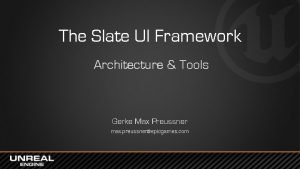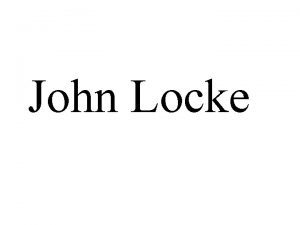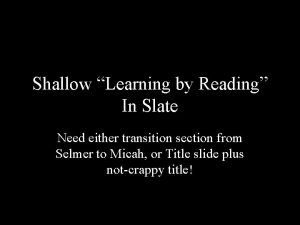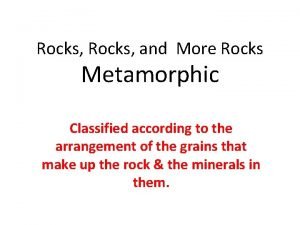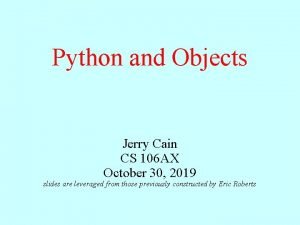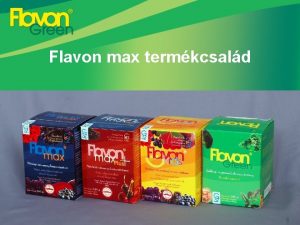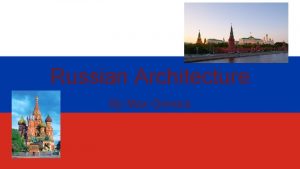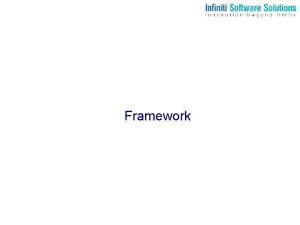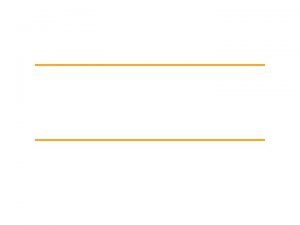The Slate UI Framework Architecture Tools Gerke Max
























- Slides: 24

The Slate UI Framework Architecture & Tools Gerke Max Preussner max. preussner@epicgames. com

UE 1, UE 2 and UE 3


Slate Design & Principles Overview Features Concepts Tools Architecture • Written entirely in C++ • Platform agnostic (works on mobile and consoles, too!) • Slate. Core module provides low-level functionality • Slate module contains library of common UI widgets • Does not require Engine or Editor modules Current Use Cases • Unreal Editor • Standalone desktop applications • Mobile applications • In-game UI

Slate Design & Principles Overview Features Concepts Tools Styling • Customize the visual appearance of your UI • Images (PNGs and Materials), Fonts, Paddings, etc. • Customizable user-driven layouts Input Handling • Keyboard, mouse, joysticks, touch • Key bindings support Render Agnostic • Supports both Engine renderer and standalone renderers Large Widget Library • Layout primitives, text boxes, buttons, images, menus, dialogs, message boxes, navigation, notifications, dock tabs, list views, sliders, spinners, etc.

Slate Design & Principles Overview Features Concepts Tools Declarative Syntax • Set of macros for declaring widget attributes • Avoids layers of indirection Composition • Compose entire widget hierarchies in a few lines of code • Uses fluent syntax for ease of use • Preferred over widget inheritance • Any child slot can contain any other widget type • Makes it very easy to rearrange UIs in code

// Example custom button (some details omitted) // Button implementation (some details omitted) class SText. Button : public SCompound. Widget { public: SLATE_BEGIN_ARGS(SMy. Button ) {} // The label to display on the button. SLATE_ATTRIBUTE(FText, Text) void SText. Button: : Construct ( const FArguments& In. Args ) { Child. Slot [ SNew(SButton). On. Clicked(In. Args. _On. Clicked) [ SNew(SText. Block). Font(FMy. Style: : Get. Font. Style(“Text. Button. Font")). Text(In. Args. _Text). Tool. Tip. Text(LOCTEXT(“Text. Button. Tool. Tip", “Click Me!")) ]; ]; } // Called when the button is clicked. SLATE_EVENT(FOn. Clicked, On. Clicked) SLATE_END_ARGS() // Construct this button void Construct( const FArguments& In. Args ); };

Slate Design & Principles Overview Features Concepts Tools Widget Gallery • Demonstrates all available Slate widgets and layouts Widget Inspector • Visually debug and analyze your UI • Can jump directly to widget code in Visual Studio or XCode UDK Remote • i. OS app for simulating touch devices on your PC • Remote server is a plug-in (enabled by default) • Primarily used for game development

Demo

Demo

Demo


Going A Little Deeper State Updates Widget Roles Anatomy Attributes Polling instead of Invalidation • Avoids duplicate state data • Exception: Non-trivial data models (use caches instead) • Performance depends on number of visible widgets

Going A Little Deeper State Updates Widget Roles Anatomy Attributes Fundamental Widget Types • SCompound. Widget – Can have nested child widgets • SLeaf. Widget – Does not contain child widgets • SPanel – Base class for layout panels Special Widgets • SWidget – Root base class for all widgets (do not inherit!) • SNull. Widget – Empty default widget User Widgets • More efficient in terms of compile time

Going A Little Deeper State Updates Widget Roles Anatomy Attributes SWidget SNull. Widget SCompound. Widget SLeaf. Widget SPanel SBorder SImage SBox SButton SText. Block SCanvas SViewport SVirtual. Joystick SGrid. Panel

Going A Little Deeper State Updates Widget Roles Anatomy Attributes Common Interfaces • Arguments – Widget parameters that do not change • Attributes – Parameters that are polled • Event handlers – Usually named ‘On. Some. Event’ Common Internals • Compute. Desired. Size() - Calculates widget’s desired size • Arrange. Children() - Arranges children within allotted area • On. Paint() – Draws the widget

Going A Little Deeper State Updates Widget Roles Anatomy Attributes Common Attributes • Enabled state, Visibility, Hit testability • Tooltip Widget, Tooltip Text, Cursor Style • Horizontal & Vertical Alignment , Padding Attributes Can Be: • Constants, i. e. Is. Enabled(false) • Delegate bindings, i. e. Is. Enabled(this, &SMy. Widget: : Handle. Is. Enabled) • Lambdas are now supported, too!

In-Game UI HUD Canvas VP Widgets Game Menus FCanvas • Low-level C++ API for drawing directly to the screen • Has been part of Unreal Engine for many years • All functions are in FCanvas class • Draw. Text(), Draw. Texture(), Draw. Tile(), etc. • Use AHUD. Canvas to access the canvas object HHit. Proxy • Provides basic interaction support for FCanvas • Create one hit proxy per interactive object • Hit proxy ID is sent to GPU for per-pixel hit tests

In-Game UI HUD Canvas VP Widgets Game Menus UGame. Viewport. Client • Allows usage of Slate widgets inside game view port • Use all features of Slate (except SWindow) • Add/Remove. Viewport. Widget. Content() Things to keep in mind • All added widgets will be layered on top of each other (SOverlay) • Widgets should use TWeak. Obj. Ptr for UObject references



In-Game UI HUD Canvas VP Widgets Game Menus The Hard Way • Use FCanvas to draw your own menus • Not recommended The Custom Way • Use HUD Widgets to create any menu layout The Lazy Way • Use Game. Menu. Builder for paged menus • FGame. Menu. Page - Single menu page • FGame. Menu. Item - An option in a menu page • Can be customized and styled • Mostly used for settings screens

What’s New in 4. 6? Slate Improvements • Decreased impact on compilation time • Split built-in widget library into multiple modules • Named slots Unreal Motion Graphics (UMG) • Artist friendly WYSIWYG editor • 2 D transformation and animation with Sequencer • Blueprint integration & scripting • Better styling system (work in progress)

Questions? Documentation, Tutorials and Help at: • Answer. Hub: http: //answers. unrealengine. com • Engine Documentation: http: //docs. unrealengine. com • Official Forums: http: //forums. unrealengine. com • Community Wiki: http: //wiki. unrealengine. com • You. Tube Videos: http: //www. youtube. com/user/Unreal. Development. Kit • Community IRC: #unrealengine on Free. Node Unreal Engine 4 Roadmap • lmgtfy. com/? q=Unreal+engine+Trello+
 Slate ui framework
Slate ui framework Slate ui
Slate ui Philipp gerke
Philipp gerke Carsten gerke
Carsten gerke Absolute max vs local max
Absolute max vs local max Blank slate approach
Blank slate approach Tasman chemicals stone shield
Tasman chemicals stone shield Activ inspier
Activ inspier Slate student crm
Slate student crm Clean slate reengineering
Clean slate reengineering Marble and slate
Marble and slate Slate edwin morgan
Slate edwin morgan Barron de montesquieu
Barron de montesquieu Catamount slate products v sheldon
Catamount slate products v sheldon Slate citation machine
Slate citation machine Shallow reading
Shallow reading Ted moallem
Ted moallem Whats the parent rock of slate
Whats the parent rock of slate Slate vs shale
Slate vs shale Clean slate design
Clean slate design Jerry cain slate
Jerry cain slate Sample monologue
Sample monologue Oi
Oi Cutting tools in sewing with pictures and meaning
Cutting tools in sewing with pictures and meaning Lie of the land
Lie of the land

